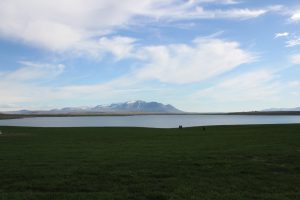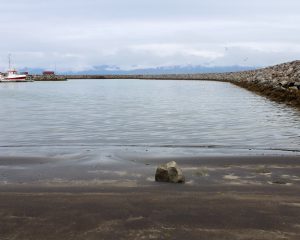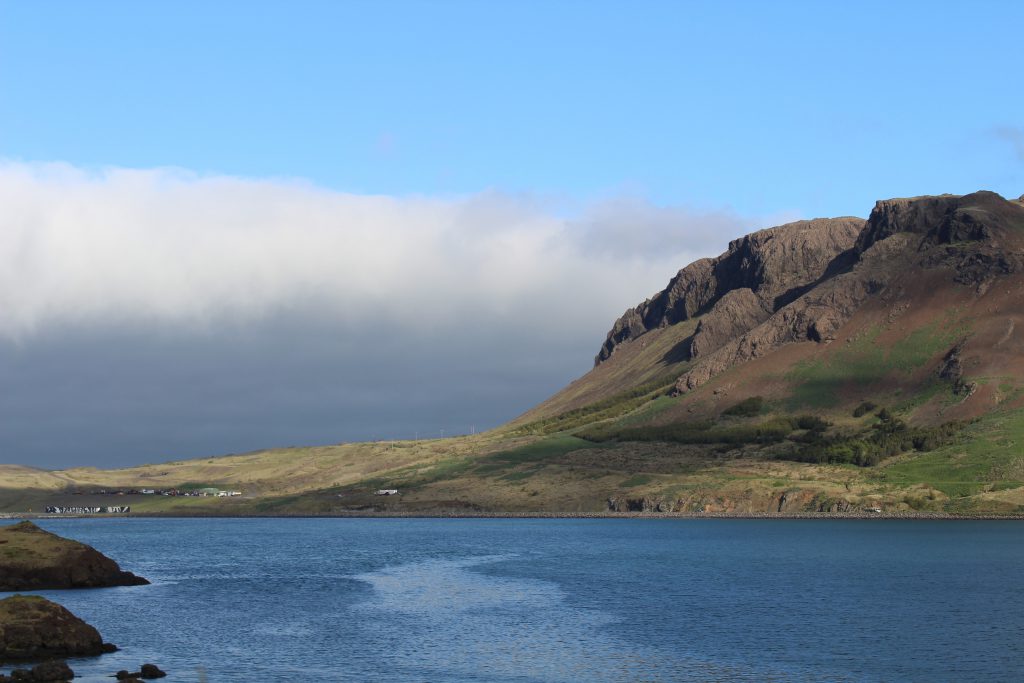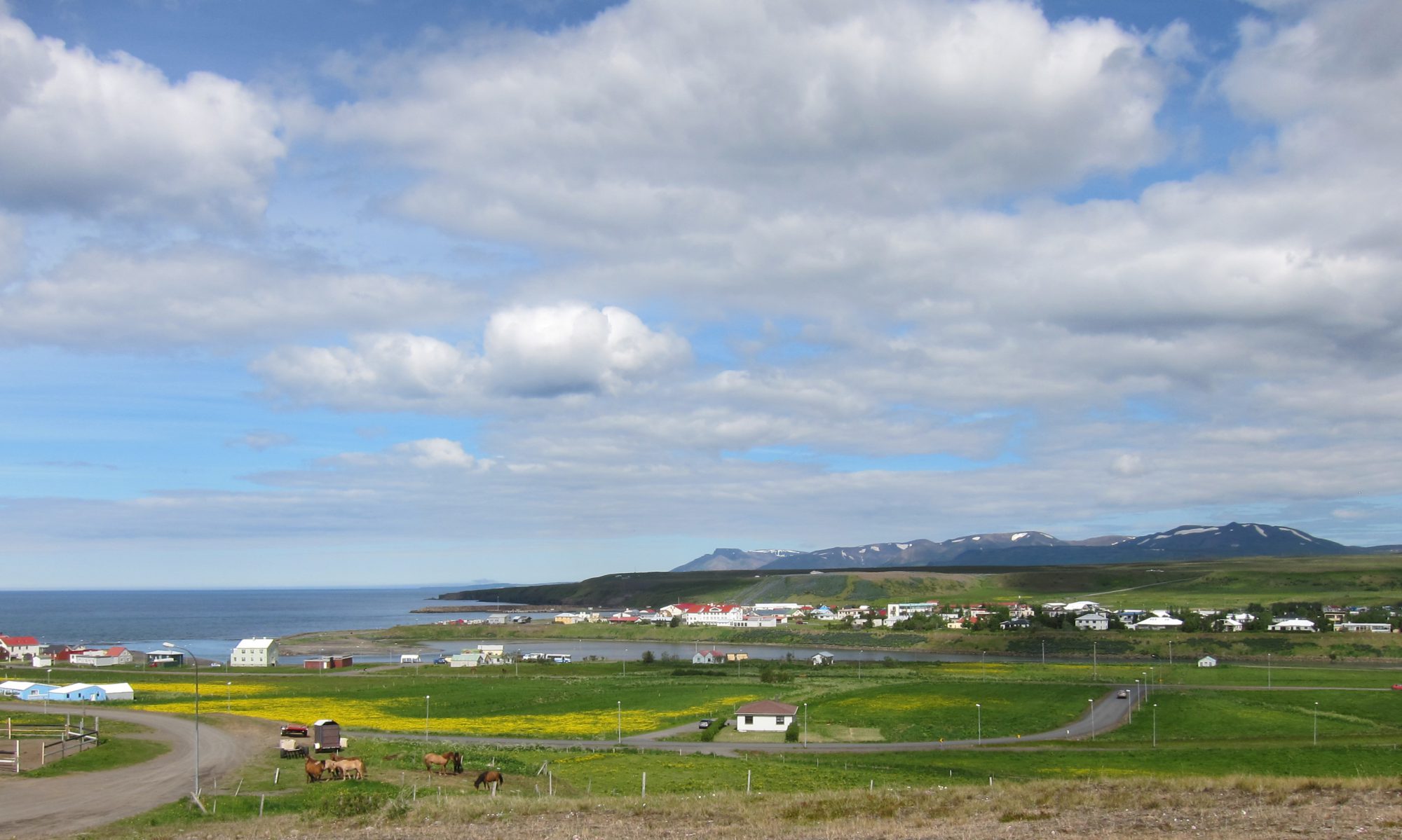
As Jóhanna Pálmadóttir, director of the Textílsetur, drove us to her sheep farm, she told us about the fishers who rent out her lake. When we asked if she gets some fish from the lake as well, she jokingly added, “there is no darkness here, so I can’t go in the night and steal the fish when they aren’t looking”. Although this was a jest, it did get me thinking about our relationship with the dark. Night is the time for loud parties, movie nights, and theatre. As a puppeteer and performer, I quickly became interested in the interpersonal relationship one has to the sun and its patterns. How does living half of the year in sunlight and the other in darkness affect people’s lives?
A quick chat with a Blönduós local in the hot pools on Friday evening gave me some insight. He told me that kids were often taught about bedtimes with blackout screens in their rooms, and bedtime/rules changed depending on the family. This seems to hint at the necessity of a sort of separation between the internal habits and the external world.
That being said, some research on blogs documenting human experiences living in 24-hour-sunlight has also revealed the amazing flexibility of humans to adapt to their environment. Trausti Thor Johannsson, an Icelander living in Scandinavia, wrote that the light and dark of the summer and winter months never bothered him growing up since it was all he had ever known. It was only later on when he had moved away and would return to visit that he felt some negative consequences during the dark winter months such as grogginess and irritability[1].

Since arriving in Iceland, I have had many different emotions in response to the brightness outside my window. I’ve woken from a nap and even though I had slept three hours, the sun would make it feel as if no time had passed. It can be disruptive for certain activities, like watching a movie on a computer screen. It has also proven a new challenge in designing a puppetry show, as the focus light needed in theatre is very difficult to achieve.
On the other hand, the midnight sun can be extremely liberating. Morning walks can be taken at any time during the day or night. Yoga on the lawn is equally possible at 9 am or 12 am. Suddenly, the patterns and habits I make aren’t connected to the sun going down.
As an anonymous Northerner wrote humorously on the blog mentioned above, “If you are out on a sunny evening, you tend to forget time, and you end up coming back from a hike at 3am. or 6am. Who cares. As for meals, who cares if it is breakfast or dinner. Or 2nd dinner.”[2]

There is definitely a balance that needs to be achieved when living in 24-hour sunlight. It has wreaked havoc on my sleep schedule. Many of our group commented on how the sunlight has altered their internal clocks during our class. Dave mentioned, “Everyone I’ve talked to is having some weird experience with sleep”. It does become necessary to regulate your habits and activities regardless of what the sun is doing, oftentimes leading to the external and internal being extremely separate. There we are, tucking ourselves in for a goodnight’s sleep while the birds chirp loudly as if it was already 6am.

This can also be true with emotions and feelings. During our class yesterday, Kathleen spoke of the 24-hour-sunlight stating, “You really notice what is going on inside of you…if I’m feeling anxious it’s not an external cause, but something going on in my own mind”.
I wrote a poem about this experience of 24-hour-sunlight; the separation between internal emotions and habits and the outside world.
Light/Dark
written on June 12, 2018
Without dark there is no you
only seas of blue
blue being what my eye lets in
when it lets in everything
without dark there is no day
no way to take the pain away
it cycles in and out like waves
a painful memory
without day there is no dawn
no way to justify a yawn
no up, no down, its all around
the birds just stay awake
without change the sky just makes
the colours of a mood
it’s sometimes bright, it’s mostly light
it’s occasionally rude
it ebbs and flows as the ocean goes,
it’s rough, it rows
it moves and throws
it can throw me all around
but without dark
there’s no way to mark
I’ve even hit the ground
without day there is no way
the birds can make a sound
and so it goes, it spins and throws,
everything to keep me on my toes
and no one know where the dark goes
until it shows its face
perhaps it grows straight from my woes
the darkness out of place

[1] https://www.quora.com/What-is-it-like-to-live-in-places-with-24-hours-of-full-daylight-or-darkness-How-is-life-affected-due-to-these-extremities-Is-there-visible-impact-on-business-governance-and-essential-activities
[2] ibid.
